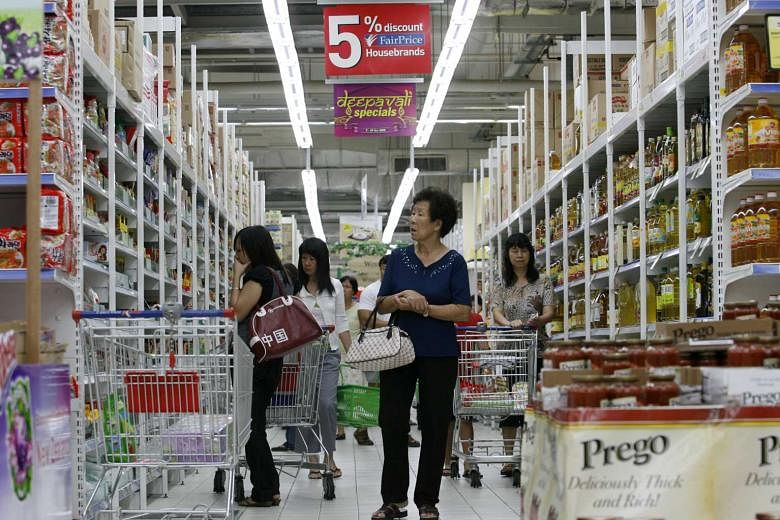SINGAPORE - The Government has lowered its forecast for Singapore's headline inflation this year after consumer prices slipped 0.6 per cent in January from a year earlier, a bigger-than-expected dip and the 15th straight month of decline.
The forecast for all-items consumer price index (CPI) for 2016 was revised down to -1.0-0 per cent from -0.5-0.5 per cent due to "the significant step-down in global oil prices in recent months and the larger-than-expected decline in COE premiums at the start of the years", the Ministry of Trade and Industry (MTI) and the Monetary Authority of Singapore (MAS) said in a joint news release on Tuesday (Feb 23).
The move is likely to raise expectations that MAS will ease its Singapore dollar policy at its next scheduled meeting in April.
MTI and MAS kept unchanged the forecast for the MAS core inflation measure - which excludes private road transport costs and accommodation and is more affected by government policy - at 0.5-1.5 per cent. They said this reflects the smaller weight of oil-related items and the exclusion of private road transport costs.
"MAS core inflation is still expected to pick up gradually over the course of 2016, as the disinflationary effects of oil as well as budgetary and other one-off measures ease," they said,
"MAS and MTI will continue to closely monitor external price developments and underlying cost pressures in the economy."
The January decline in headline inflation was bigger than the 0.4 per cent dip forecast by economists polled by Reuters and came as housing and transport costs dipped more sharply. Headline CPI also declined by 0.6 per cent year-on-year in December.
Consumer prices for the whole of last year fell for the first time since 2002, depressed by falling oil prices, a slowing economy as well as government measures to cool the housing market.
The MAS core inflation measure rose 0.4 per cent from a year earlier, in line with economists' median forecast. In December, core CPI edged up 0.3 per cent. MAS' core inflation gauge is the focus of its monetary policy.
The rise was mostly on account of the smaller reduction in electricity tariffs and higher food and retail goods inflation, which more than offset the fall in services inflation.
For a breakdown of prices, private road transport cost was 1.8 per cent lower, extending the 1.1 per cent decline in December, as the sharper fall in car prices amid weaker Certificate of Entitlement (COE) premiums more than offset the faster pace of increase in petrol pump prices.
Accommodation cost declined by 3.1 per cent in January, after falling by 3 per cent in the previous month, reflecting the soft housing rental market.
The cost of oil-related items fell at a slower rate of 3.2 per cent in January compared to the 7 per cent decline in the previous month, mainly due to a smaller drop in electricity tariffs, which reflected the low base in January last year.
Overall services inflation moderated to 0.5 per cent in January from 0.9 per cent a month earlier, largely due to a slower pace of increase in education services fees and holiday travel costs. Meanwhile, healthcare services costs picked up as the disinflationary effects of enhanced medication subsidies introduced in January last year dissipated.
Food inflation increased to 1.7 per cent in January from 1.5 per cent in December, as a larger increase in the prices of non-cooked food more than offset the smaller rise in the cost of prepared meals.
The overall cost of retail items was 0.6 per cent higher, following a 0.1 per cent rise in the preceding month, mainly due to a faster pace of increase in the price of clothing and footwear.


